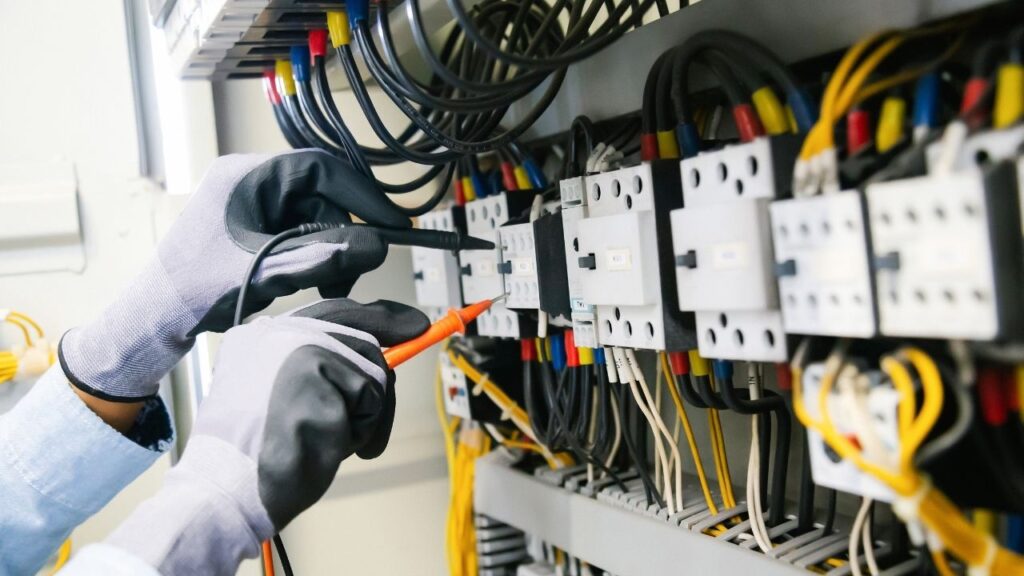How to Power Your Air Conditioner During a Power Outage with an Inverter
When the temperature rises, staying cool is essential, especially during power outages. This guide will explain “How to Power Your Air Conditioner During a Power Outage with an Inverter” and why Inverter AC units are a more efficient choice than traditional AC units.
What is an Inverter AC?
Before we delve into “How to Power Your Air Conditioner During a Power Outage with an Inverter,” it’s important to understand what an Inverter AC is. An Inverter AC is an air conditioner that uses a variable-speed compressor, which adjusts its speed according to the cooling demand, making it more energy-efficient.
Why Choose an Inverter AC Over a Traditional AC?
Using a traditional AC unit with an inverter can present some challenges. One of the most significant issues is the rapid battery drain due to the high power consumption of traditional AC units, especially during compressor startups. During these moments, a 1hp traditional AC unit can consume as much as 3000 watts, which can quickly deplete your inverter’s battery.
Selecting the Right Inverter for Your Inverter AC
Type of Wave Output
When you’re figuring out “How to Power Your Air Conditioner During a Power Outage with an Inverter,” it’s crucial to use a Pure Sine Wave inverter. Modified Sine Wave inverters are not compatible and may damage your AC.
Ideal Mercury Inverters for Running AC Units
For those looking to run their AC units efficiently during a power outage, Mercury offers ideal solutions with their 3.5kva and 5.5kva Solar Hybrid inverters.
3.5kva Solar Hybrid Inverter (24V)
- Battery Bank: Requires a minimum of two 12V batteries connected in series.
- Backup Time: Provides up to 4 hours of backup time (@ 80% depth of discharge) for a 1hp Inverter AC unit.
- Voltage: Operates on a 24V system.
5.5kva Solar Hybrid Inverter (48V)
- Battery Bank: Requires a minimum of four 12V batteries connected in series.
- Backup Time: Offers up to 8 hours of backup time (@ 80% depth of discharge) for a 1hp Inverter AC unit.
- Voltage: Operates on a 48V system.
By choosing the right Mercury inverter and accompanying battery bank, you can ensure that your Inverter AC unit runs efficiently, even during a power outage.
Connecting Your Inverter AC to the Power Inverter
Note: The following steps should only be carried out by a qualified electrician to ensure safety and proper installation.

- Turn off the main power supply: This is crucial to avoid any electrical hazards during the installation process.
- Connect the inverter cables to the battery: Ensure that the connections are secure to provide a stable power supply.
- Open the AC’s power supply box and connect the inverter cables: Follow the AC unit’s manual for specific instructions on how to do this safely and correctly.
- Turn on the inverter and let it stabilize: Wait for a few minutes to ensure the inverter is ready to supply power.
- Turn on the AC: Once the inverter is stable, you can turn on the AC unit.
- Monitor the inverter’s LED display: This will help you ensure that the inverter is supplying the required power to the AC unit effectively.
By following these steps with the assistance of a qualified electrician, you can ensure a safe and effective setup for powering your Inverter AC during a power outage.
Preparing for a Power Outage
- Invest in a Reliable Power Inverter: Choose a Pure Sine Wave inverter that can handle your Inverter AC’s power needs.
- Keep Your Battery Fully Charged: A fully charged battery ensures you have backup power when needed.
- Reduce Power Consumption: Turn off non-essential appliances to extend your backup power.
Safety and Maintenance
- Use high-quality equipment.
- Follow installation guidelines.
- Avoid overloading the inverter.
- Keep the inverter dry and well-maintained.
Conclusion
Now you know how to power your air conditioner during a power outage with an Inverter. Using a power inverter with an Inverter AC unit is a reliable and efficient way to stay cool during power outages. By choosing the right type of inverter and following safety guidelines, you can enjoy uninterrupted cooling.
Key Takeaways
- Only Pure Sine Wave inverters are compatible with AC units.
- Inverter AC units are more energy-efficient than traditional AC units.
- Proper selection of inverters and AC units is crucial for optimal perf
For more information on Mercury’s range of inverters ideal for running AC units, visit Mercury Direct.
FAQ
How does a power inverter work?
A power inverter converts DC power from a battery or solar panel into AC power, suitable for running appliances like Inverter ACs.
Why do I need a power inverter for my Inverter AC during a power outage?
A power inverter provides a backup power source, allowing your Inverter AC to operate during power outages.
How do I select the right power inverter?
Choose a Pure Sine Wave inverter based on your Inverter AC’s wattage requirements and ensure it is compatible with your AC unit.
How do I prepare for a power outage?
Invest in a reliable power inverter and keep your battery fully charged. Reduce overall power consumption to extend backup power.
For more details and to purchase the right power inverter for your needs, visit Mercury Direct.


This insightful article provides a balanced comparison between affordable and high-end ductless air conditioners. It highlights the cost savings and energy efficiency of cheaper units, while also addressing their drawbacks. The benefits of premium models, like enhanced efficiency and advanced features, are well-explained. Thank you for this valuable information!
This article offers great insights into powering your Inverter AC during a power outage. The clear explanation of inverter types, their importance, and step-by-step setup guidance is extremely helpful. I appreciate the focus on safety and efficiency. Thanks for sharing this useful and informative guide!
Using an inverter during a power outage can keep your air conditioner running smoothly. Inverters convert DC power to AC power, providing a stable supply to your AC unit. Ensure your inverter’s capacity matches the power requirements of your air conditioner to maintain comfort even when the grid goes down.
To power your air conditioner during a power outage, use an inverter to convert DC power from a battery to AC power. Ensure the inverter’s wattage is sufficient for your AC unit’s power needs. This solution allows continued comfort while minimizing the impact of power disruptions on cooling.